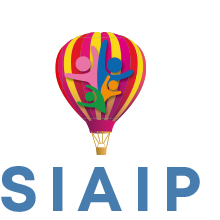Editorial
Issue 4 - 2024
Editorial
Abstract
First of all, we and the entire editorial committee of this Journal, want to wish you a happy and peaceful Christmas and a fruitful and exciting New Year!
Let’s start this 2025 with an update on various current topics.
It’s well known that food allergy is very common in early life, especially allergy to cow’s milk protein. The prevalence, persistence and severity of this condition negatively impact the health-related quality of life of both patients and their families. Therefore, options to modulate the course of the disease in pediatric patients are welcome. Precisely in this regard, the commission for food allergy of the Italian Society of Pediatric Allergy and Immunology, directed by Mauro Calvani, conducted a good review of the recent literature entitled “The role of the lilk madder in cow’s milk allergy. A review of the literature and a proposal” (p. 19).
Milk ladder (ML) means the introduction of a minimal quantity of allergen, made less allergenic by fermentation or cooking (such as in biscuits, muffins, etc.). This technique has been proposed as a therapeutic option that makes it possible to gradually reintroduce milk-containing foods at home in relative safety; it starts with foods containing partially modified and better tolerated allergens and then gradually proceeds to the introduction of whole cow’s milk. The authors discuss the effects of the different processes on the allergenicity of milk proteins, evaluating the efficacy and safety of their use in this approach in children with both non-IgE-mediated and IgE-mediated milk allergy. They conclude that “only children without a clinical history of severe reactions or recurrent wheezing can be candidates for ML, starting as early as possible and in any case not in children older than 6 years.”
Another two articles deal with another form of food allergy that is relatively common in Italy, such as that to nuts. Paolo Bottau et al., who present a series of interesting clinical cases in their article: “Evaluation of pine nut tolerance in children with nut allergy: a series of cases” have taken an interesting approach. Despite the low cross-reactivity between pine nuts and other nuts, many children are advised to avoid pine nuts without adequate diagnostic evaluation. In this series of cases, however, the authors observed that most children who introduced pine nuts into their diet did not show clinically significant reactions. Therefore, they suggest evaluating tangible clinical symptoms before excluding pine nuts from the diet, so as not to further burden the clinical and psychological impact of a restricted diet (p. 34). The other article from the group in Verona directed by Giorgio Piacentini addresses approximately the same topic, but from a different point of view. In their article entitled “Oral food test with a mix of dried fruit to partially liberalize the diet in pediatric IgE-mediated nut allergy” (p. 41), the authors address the issue of the duration of the diet. Too often the provocation test is postponed or avoided: it is necessary to do this however, and to shorten the time one can proceed with a mixture of dried fruit which can, in case of a totally negative result, lead to a rapid liberalization of the diet.
In the field of asthma, Elio Novembre and coworkers make an interesting reflection in the article “The prescriptive paradox of allergic immunotherapy for respiratory allergic diseases” (p. 15).
We all know that in clinical practice we are often conditioned in the prescription of allergic immunotherapy (AIT) for the fear that it may worsen the severity of asthma attacks. Mainly in recent years, AIT has proven to be an effective, safe and economical treatment not only for allergic rhinitis but also for asthma. Despite this scientific background (also accepted by international guidelines and recommendations), the prescription of AIT is paradoxically low and is further decreasing in Italy. The authors discuss the logic of AIT and the barriers to overcome in order to implement this therapy.
An article of great clinical interest is that by Alberto Tommasini et al.: “PI3Kδ inhibition for the treatment of APDS: efficacy, safety and tolerability of targeted therapy with leniolisib” (p. 8). PI3Kδ activation syndrome (Activation PI3K-Delta Syndrome, APDS) is caused by mutations in the PIK3CD and PIK3R1 genes that leads to hyperactivation of the PI3Kδ signaling pathway. The disease is characterized by recurrent bacterial and viral infections, severe respiratory symptoms and/or bronchospasm, and persistent benign lymphoproliferative complications that involve a high risk of developing lymphoma and/or autoimmune disease. The only therapy to date is hematopoietic stem cell transplantation, but now the possibility of an effective pharmacological therapy has appeared on the horizon. Among the various products proposed that attempt to turn off/inhibit PI3Kδ activity, leniolisib has recently been approved by the FDA as an orphan drug. Leniolisib has demonstrated good efficacy, safety and tolerability and has given extremely promising preliminary results, blocking progression of the disease.
Finally, we highlight an original review of the literature on the ignored risks of nasal irrigation by Cristiana Indolfi et al.: “Naegleria fowleri, the brain-eating amoeba: an invisible enemy in nasal irrigation with untreated water” (p. 3). Naegleria fowleri can be present in undrinkable water and cause a fatal meningeal infection (amoebic meningoencephalitis). This review highlights the risks of using untreated water for nasal irrigation and the route through which the amoeba reaches the brain, concluding that the type of water to be used must be carefully selected if primary amebic meningoencephalitis is to be prevented.
Again, best wishes.
Downloads
License
This work is licensed under a Creative Commons Attribution-NonCommercial-NoDerivatives 4.0 International License.
Copyright
Copyright (c) 2025 Italian Journal of Pediatric Allergy and Immunology
How to Cite
- Abstract viewed - 283 times
- pdf downloaded - 29 times



 pdf
pdf
